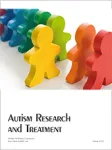[article]
| Titre : |
Is Autism a Member of a Family of Diseases Resulting from Genetic/Cultural Mismatches? Implications for Treatment and Prevention |
| Type de document : |
texte imprimÃĐ |
| Auteurs : |
Staci D. BILBO, Auteur ; John P. JONES, Auteur ; William PARKER, Auteur |
| AnnÃĐe de publication : |
2012 |
| Article en page(s) : |
11 p. |
| Langues : |
Anglais (eng) |
| Index. dÃĐcimale : |
PER Périodiques |
| RÃĐsumÃĐ : |
Several lines of evidence support the view that autism is a typical member of a large family of immune-related, noninfectious, chronic diseases associated with postindustrial society. This family of diseases includes a wide range of inflammatory, allergic, and autoimmune diseases and results from consequences of genetic/culture mismatches which profoundly destabilize the immune system. Principle among these consequences is depletion of important components, particularly helminths, from the ecosystem of the human body, the human biome. Autism shares a wide range of features in common with this family of diseases, including the contribution of genetics/epigenetics, the identification of disease-inducing triggers, the apparent role of immunity in pathogenesis, high prevalence, complex etiologies and manifestations, and potentially some aspects of epidemiology. Fortunately, using available resources and technology, modern medicine has the potential to effectively reconstitute the human biome, thus treating or even avoiding altogether the consequences of genetic/cultural mismatches which underpin this entire family of disease. Thus, if indeed autism is an epidemic of postindustrial society associated with immune hypersensitivity, we can expect that the disease is readily preventable. |
| En ligne : |
http://dx.doi.org/10.1155/2012/910946 |
| Permalink : |
https://www.cra-rhone-alpes.org/cid/opac_css/index.php?lvl=notice_display&id=178 |
in Autism Research and Treatment > (April 2012) . - 11 p.
[article] Is Autism a Member of a Family of Diseases Resulting from Genetic/Cultural Mismatches? Implications for Treatment and Prevention [texte imprimÃĐ] / Staci D. BILBO, Auteur ; John P. JONES, Auteur ; William PARKER, Auteur . - 2012 . - 11 p. Langues : Anglais ( eng) in Autism Research and Treatment > (April 2012) . - 11 p.
| Index. dÃĐcimale : |
PER Périodiques |
| RÃĐsumÃĐ : |
Several lines of evidence support the view that autism is a typical member of a large family of immune-related, noninfectious, chronic diseases associated with postindustrial society. This family of diseases includes a wide range of inflammatory, allergic, and autoimmune diseases and results from consequences of genetic/culture mismatches which profoundly destabilize the immune system. Principle among these consequences is depletion of important components, particularly helminths, from the ecosystem of the human body, the human biome. Autism shares a wide range of features in common with this family of diseases, including the contribution of genetics/epigenetics, the identification of disease-inducing triggers, the apparent role of immunity in pathogenesis, high prevalence, complex etiologies and manifestations, and potentially some aspects of epidemiology. Fortunately, using available resources and technology, modern medicine has the potential to effectively reconstitute the human biome, thus treating or even avoiding altogether the consequences of genetic/cultural mismatches which underpin this entire family of disease. Thus, if indeed autism is an epidemic of postindustrial society associated with immune hypersensitivity, we can expect that the disease is readily preventable. |
| En ligne : |
http://dx.doi.org/10.1155/2012/910946 |
| Permalink : |
https://www.cra-rhone-alpes.org/cid/opac_css/index.php?lvl=notice_display&id=178 |
|  |


